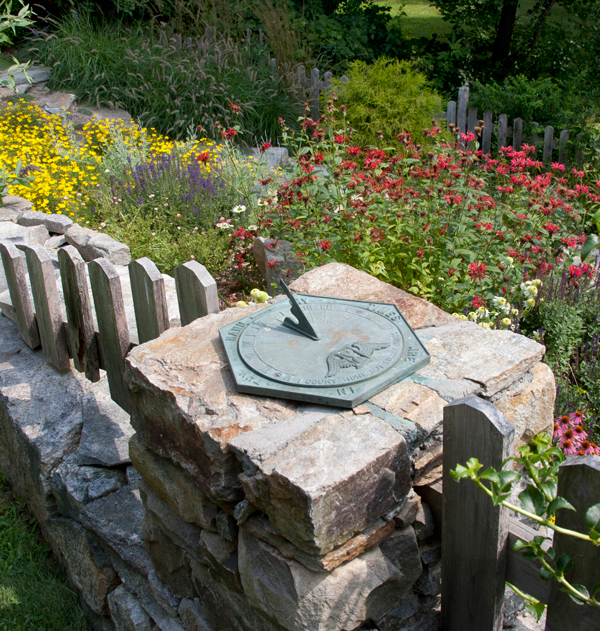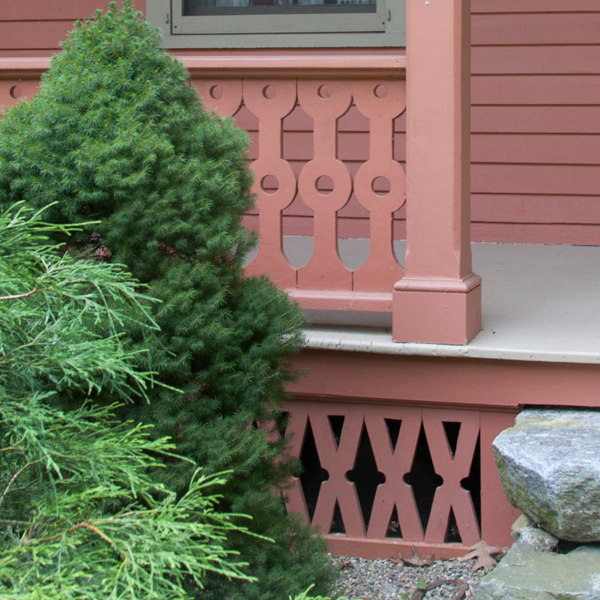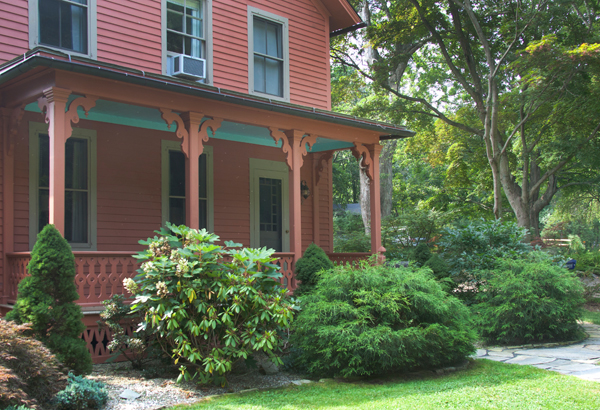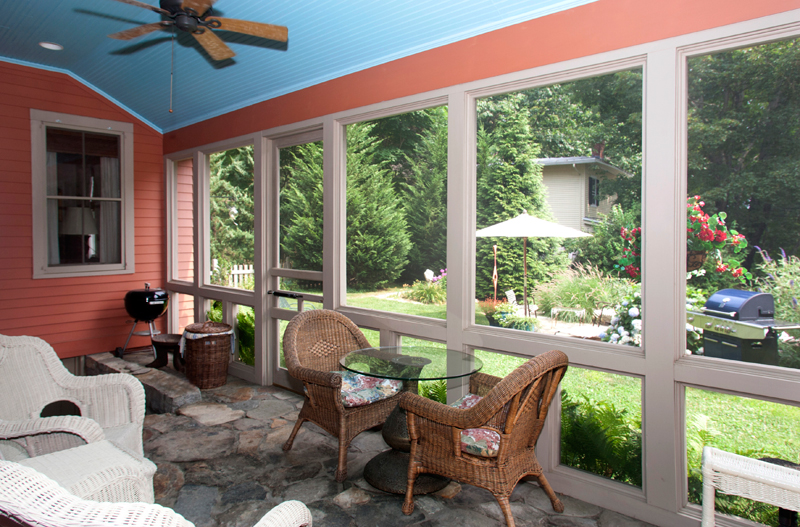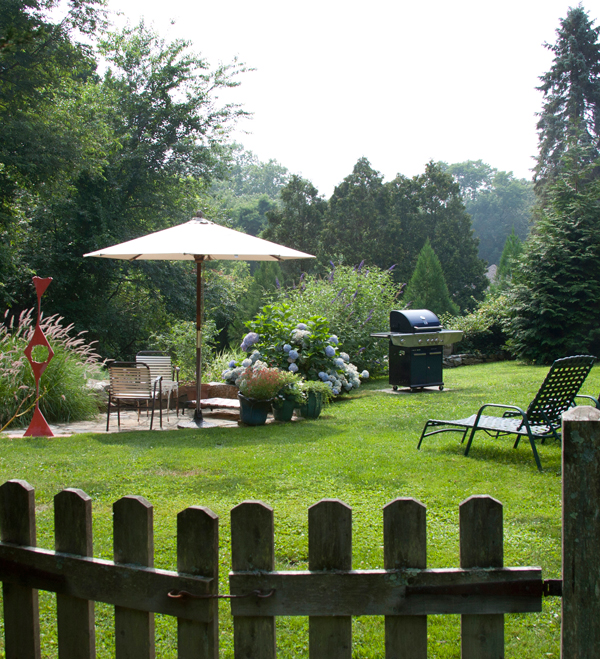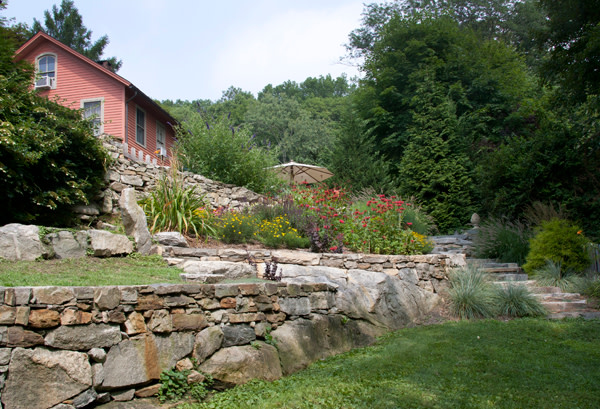
Stone retaining walls create terraces that render the steep site usable. To the right are 13 5′ x 2′ granite steps connecting lower garden to house.
When they bought an 1886 Victorian house in Deep River, Connecticut, Tom and Cheri-Ann Perry could visualize the gardens they would tend—even though the then-unusable back yard was solid ledge with a steep vertical drop. The couple, dealers who own a store called One of a Kind Antiques, gravitate toward places with great architecture, gardens, and stonework whenever they travel. “We always notice other people’s homes,” says Tom.
After they restored the house, Tom and Cheri-Ann went to work to create a driveway and a garage, which required blasting. The project yielded over 400 tons of stone, mostly granite, which they used to construct walls, steps, walkways, and even flooring for a new screened porch.
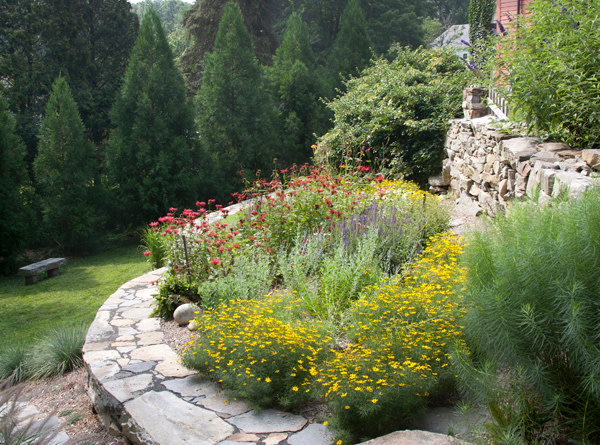
Planting beds are built into the terracing.
“We had a quarry on our own property!” says Tom. “Normally, when you blast like that, it’s all rubble rock and you have to pay someone to haul it away. But ours turned out to be beautiful stone to be harvested.”
The Perrys terraced the yard, creating a more gradual slope. They went out as far as they could with the excavator, using two-, three- and four-ton stones as the base. They filled in with rubble and topsoil to make three tiers of planting beds. Using 13 large stones, each 5′ long by 2′ wide, they created steps for easy access to the lower garden. The contour of the land dictated the garden design.
Cheri-Ann had the foresight to plant a row of Japanese cypresses in the back, along with robusta junipers and boulevard cypresses out front, and four Leland cypresses in the side yard. The trees had begun to afford privacy before the gardens were in.
“There was nothing on the property when we bought it, just a few sickly azaleas,” Cheri-Ann recalls. “No plantings around the house, none near the street. It was bare.”

Planting beds are built into the terracing.
Cheri-Ann did not want formal, structured vegetation. She chose plants based on color, texture, tolerance to Connecticut weather, and long bloom times. “The color scheme is red and orange; purple, yellow, and white,” Cheri-Ann explains. “My selection has evolved through trial and error. My thumbs are ‘light green’ at best, and my garden time is limited. These flowers have done well in drought, and also in excessive rain and humidity.”
Bloom continues all summer, when the Perrys actively use the garden. They enjoy their climbing hydrangeas, Adonis Blue butterfly bushes, hostas, ostrich ferns, ornamental grasses, moonflower, bee balm, blue star, Russian sage, lilies, echinacea, veronica, geranium, phlox, salvia, and bamboo. Shrubs include viburnum, umbrella pine, barberry, spiral cedar, cut-leaf maple, andromeda, azalea, mountain laurel, and rhododendron.
The couple planted evergreens for color and structure year-round. A well-used feature is the small stone patio that features a sculpture by a local artist. “We sit here in the garden, but most of it is a little bit hidden. You have to walk around to discover it,” says Cheri-Ann.
“If the yard were flat, it would have been boring.”



